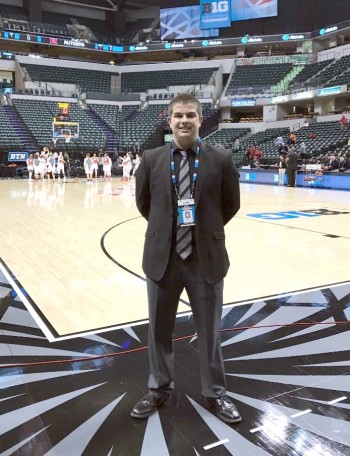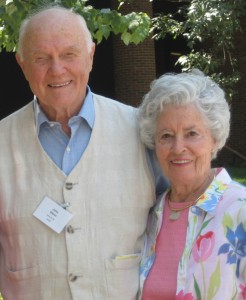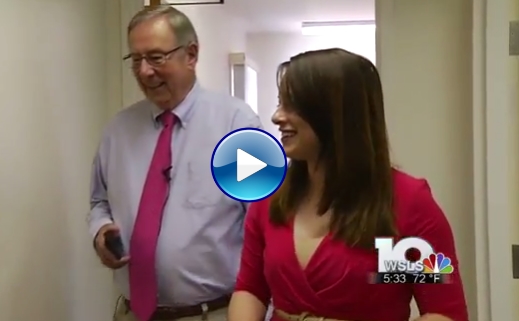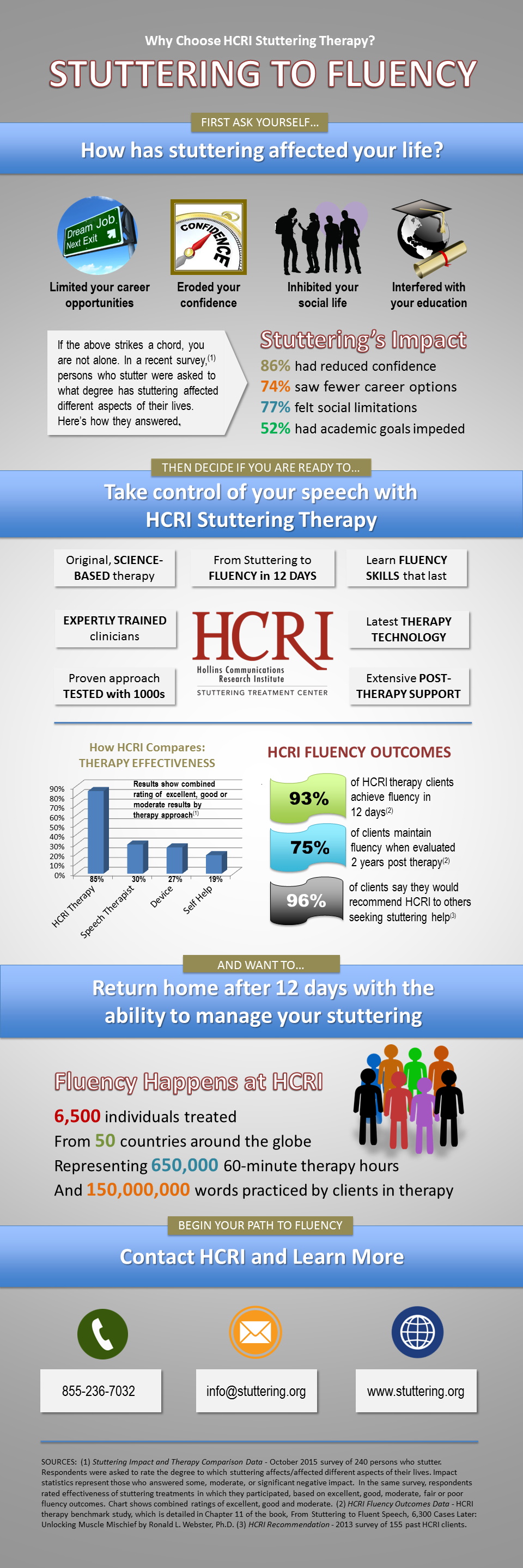There are many factors that go into selecting an effective stuttering therapy program that is right for you. To help in your decision-making process, this infographic shows the outcomes you can expect from participating in the Hollins Communication Research Institute (HCRI) 12-day stuttering therapy program. It also illustrates why experience matters when it comes to choosing stuttering treatment.
Tag: fluent speech
Stuttering Therapy Q&A with HCRI President Dr. Ron Webster
At Hollins Communications Research Institute (HCRI), we always welcome calls and emails from individuals who stutter and look forward to answering questions about our 12-day stuttering therapy program. To help those who want to learn more about our treatment, we also offer extensive information online at stuttering.org and provide helpful information packets on request.
Our team has compiled a list of HCRI Frequently Asked Questions that we include in our nonprofit center’s materials and on our website. Recently, HCRI President Dr. Ron Webster was asked some additional questions we felt were important to share. Following are those questions and Dr. Webster’s responses.

Question:
Is your proprietary stuttering therapy program offered only in Roanoke, Virginia?
Dr. Webster’s Answer:
Yes, our 12-day treatment program is administered only in Roanoke. Why? HCRI’s facility is designed for the specific purpose of administering stuttering therapy, researching the condition, and developing treatment innovations. Our building is equipped with customized electronics and therapy technology that facilitate the learning of lasting fluency skills. In addition, our treatment tools and protocols enable our team to constantly monitor therapy procedures to always deliver the highest standards of clinical excellence.
In addition to administering our therapy program, HCRI’s expert clinicians continuously evaluate the details and effectiveness of our methods. Constant scrutiny of our work is a necessary component of keeping quality standards where we think they have to be to deliver powerful, effective stuttering therapy. At HCRI, you can count on benefiting from our focused approach to your therapy. You can be assured that the quality of your experience at HCRI will be worthwhile for you.
Question:
Is your HCRI stuttering therapy available on the web?
Dr. Webster’s Answer:
Could we conduct our program via the internet? Yes, but we don’t – and for good reason. Our work on distance therapy has shown that, at the present time, we cannot meet the same standards of excellence that are met when clients come to HCRI. There are too many variables at work that compromise the quality of fluency training.
If you wish to receive our highest standards of therapy delivery, you will travel to Roanoke. We will not offer convenience in place of quality. In addition, when you attend therapy here, you will receive careful, direct attention from our clinicians that guides the quality of your training in ways that are unique to your learning style. You will benefit maximally from the powerful experience of being here.
Our therapy program involves 100 hours of instruction and guided practice of fluency skills, skill sequences, and error recognition and correction. Your speech is complex. It takes time and precision learning to change the detailed way in which you understand your speech, alter small details of speech-muscle activity, and use fluency skills in your daily life. One hundred hours is the minimum time that we have found to be effective for most of our clients. There appears to be no good shortcuts to this proposition.
Question:
Is HCRI stuttering therapy a good value for me?
Dr. Webster’s Answer:
If you look at the cost of therapy, which totals $4,250, there is no argument that a significant amount of money is involved. However, if you look at the cost related to the number of therapy hours you receive with HCRI, then our therapy cost comes in at $42.50 per hour.
In contrast, many therapists charge $90 per clinical hour (a 50-minute period). If it takes you 100 clinical hours of such treatment, you will need to pay roughly $9,000. And, you likely never received upfront information about the success rates of such therapies.
When you consider HCRI’s fluency outcomes, then our program is likely to be more effective and cost less than most therapies available today. An old physician friend once said to me, “The most expensive medicine is that which does not work.” You might wish to think about that idea as you consider selecting a therapy for yourself.
HCRI stuttering therapy has a record of producing excellent fluency results for most of our clients. Research shows that 93 percent achieve fluent speech by the end of their 12-day program. Seventy to 75 percent of clients maintain fluency when evaluated one and two years post therapy.
As one of our clients said, “In fact, the HCRI stuttering therapy program is not expensive – in my view, it is priceless!” We think that says it all.
Question:
Does HCRI offer any follow-up assistance in the event I need it?
Dr. Webster’s Answer:
Yes, our post-therapy support is comprehensive. Yet, most of our clients report that they do not need continuing follow-up treatment to retain their fluency. The reason for this is that HCRI stuttering therapy relies on new ways to train speech-motor skills that use the correct application of fundamental principles of learning. Our research results demonstrate that our clients learn robust fluency skills – not fragile fluency skills that breakdown soon after therapy is completed.
For those who want additional assistance after their therapy program, we provide direct clinical instruction via telephone or computer video conferencing. Often, a quick clinical insight from one of our clinicians puts a client back on track.
Every client receives a take-home package that includes HCRI’s fluency-practice software, therapy manuals, and the use of our proprietary app that help keep fluency skills on track. We host refresher programs and an annual retreat for our clients. In addition, alumni-led practice groups via phone are available year round. At HCRI, we are your partner in fluency for life.
If you have additionalquestions about our nonprofit center or HCRI’s science-based approach to stuttering therapy, please contact us at (540) 265-5650 or info@stuttering.org.
Click here for more – Stuttering Therapy Q&A >>
11 Insights into the Stuttering Therapy Experience at Hollins Communications Research Institute
For individuals who stutter, finding the right therapy can make the difference between minimal speech improvement and lasting, strong fluency. At Hollins Communications Research Institute (HCRI), we encourage everyone to study therapy options before making a treatment decision. It is vital to learn about each provider’s approach, experience and fluency results.
 Stuttering is one of the most difficult disorders to treat. Yet, with the right therapy, people can achieve the ability to speak fluently for the long term. As you navigate your options, we encourage you to compare HCRI’s 12-day immersion program with other stuttering therapy choices.
Stuttering is one of the most difficult disorders to treat. Yet, with the right therapy, people can achieve the ability to speak fluently for the long term. As you navigate your options, we encourage you to compare HCRI’s 12-day immersion program with other stuttering therapy choices.
HCRI stuttering therapy is based on the scientific analysis of what happens when people stutter, along with the identification of exactly what needs to be done to replace the distorted muscle movements that give rise to stuttering.
Our intensive therapy teaches individuals who stutter how to use their speech muscles in new ways to stop stuttering and generate fluent speech in all types of speaking situations.
The HCRI stuttering therapy experience is designed to be powerful, practical and transforming. HCRI President Ronald L. Webster, Ph.D., describes it as follows.
1. Up Close and Personal
Our 12-day immersion program works successfully with stuttering types that range from very mild to very severe. Our focus every minute of the day is centered on helping you achieve lasting fluency. You will have personalized, one-on-one guidance from our skilled treatment team, as well as work in a small group setting with others who stutter. HCRI’s program involves a proven system that is tailored to your specific speech challenges. You will feel unwavering support and a sense of personal accomplishment as each day unfolds.
2. Long-Term Fluency as the End Goal
HCRI stuttering therapy provides unmatched learning opportunities for the precise skills that generate fluent speech. We are dedicated to helping you acquire these skills and provide you with the tools and support you need to speak fluently for the rest of your life.
3. Lifetime of Connections
During your short time at HCRI, you will establish strong connections with our clinical team, as well as with others who are going through the therapy experience with you. Often HCRI participants cultivate close friendships with one another that last for years after they return home. Moreover, our clinicians will always be available to you after therapy. At HCRI, we are your partner in fluency for life.
4. Grounded in Science to Yield Results
Our team of research scientists invented HCRI stuttering therapy after extensive analysis and testing. Through the years, the treatment program has been continually advanced through careful scientific studies. As a participant, you will benefit from each of our discoveries and engage in a proven therapy that raises the bar on clinical excellence with demonstrated outcomes. Additionally, you will use treatment technologies, also invented here, that foster proficient, long-lasting learning of fluency skills.
5. Commitment and Reward
Your HCRI therapy experience will call for a lot of work and dedication on your part. During the 12 days you spend at our Virginia center, you will be immersed in the HCRI therapy process and away from all the distractions that come with daily life. Your time and commitment will be well worth it. Nearly all the people who complete our treatment program will emphasize that. Participating in HCRI stuttering therapy will provide you with the skills to speak fluently and confidently.
6. Proven Approach
After treating thousands who stutter, we know what works and what doesn’t when it comes to providing effective stuttering treatment. Speech is very complex. We break it down into a series of learnable, small steps that make it possible for you to achieve fluency. Research demonstrates that 93 percent of HCRI participants achieve fluent speech by the end of their 12-day program and 75 percent maintain fluency when evaluated two years later.
7. One-of-a-Kind Therapy
The HCRI therapy program, with its detailed protocols and advanced technologies, is offered only here at our nonprofit center in Virginia. No other therapy matches HCRI. Our clients tell us that there are other providers who claim they do the same thing as HCRI. That is flatly not true. Other providers may use some of the same terms. But that is where it ends. Our therapy protocols are different. Our operations are different. Our clinician training is different. And, our treatment technology is only available at HCRI. Moreover, to ensure therapy consistency and reliability, we maintain stringent quality controls that are not available elsewhere.
8. Highly Skilled Clinical Team
HCRI clinicians are practiced and motivated to help you make the best of what we offer. Our clinicians are recognized for their compassion and expert technical skills. They work exclusively with individuals who stutter and have experience treating a broad range of stuttering types and severities. Our clinicians treat more people who stutter in one year than most speech therapists treat throughout their careers.
9. Magnet for Motivated Individuals
People who come to HCRI desire to be achievers. They seek us out to advance their quality of life through fluency and enable a bright future. During HCRI treatment, you will participate with a others from all walks of life who share your passion to live a fluent life. While your learning process may be individually tuned, you will immediately feel the support and encouragement from everyone you meet – our clinicians, other participants and the HCRI staff.
10. Experience and Know-How
If you seek an effective, premier therapy to address your stuttering, you would be hard pressed to find one that equals what we do at HCRI. We have treated more than 6,500 individuals who stutter. This depth and scope is unparalleled in the treatment of stuttering.
11. Where Fluency Happens
If you want to achieve lasting fluency, it makes sense to attend a program that has a rich history of helping people address the unique human disorder of stuttering. If results matter to you, then HCRI’s program has consistently demonstrated positive and lasting fluency outcomes for nearly 50 years. You will be impressed and delighted once you start the therapy process with its power, reliability and true effectiveness.
————–
About HCRI
HCRI was founded by Ronald L Webster, Ph.D. in 1972 to investigate stuttering through scientific discovery and treatment innovation. Virginia-based HCRI, a 501 (c) (3) charitable organization, has become an international leader in stuttering research and the development of scientifically derived therapy approaches.
Individuals who stutter have traveled from across the U.S. and 50 countries to participate in the HCRI stuttering therapy experience. Clients come from all walks of life and include teachers, business professionals, athletes, broadcasters, engineers, musicians, students, doctors, military personnel, police officers, actors, a Supreme Court nominee, and even royalty.
HCRI is located at 7851 Enon Drive in Roanoke, Va. For more information, visit www.stuttering.org or contact HCRI at (540) 265-5650 or info@stuttering.org.
Ambition and Hard Work Enabled Sean Griffin to Achieve Fluency – and Land his Dream Job
Sean Griffin of Princeton, New Jersey had his sights on a career in broadcast journalism when he entered Rutgers University four years ago. To help accomplish his career ambition, he double majored in journalism and sports management.
Adding practical experience to his studies, he volunteered as a play-by-play sports announcer for the university’s radio station, as well as served as an intern for a nationally syndicated morning news show and at SiriusXM.

Through steadfast motivation and hard work, Sean was on his way to attaining his goal. There was only one thing that stood in his way. His stuttering. Sean characterized his stuttering as a mild-to-moderate condition.
To proactively address his stuttering and prepare for his future career, Sean enrolled in two different speech therapy programs while at college. He experienced some improvement in his fluency after each; yet, the results were not lasting.
Then he learned about Hollins Communications Research Institute (HCRI) and the center’s unique approach to stuttering treatment. HCRI’s 12-day immersion therapy utilizes science and principles of learning to help individuals who stutter acquire skills to control stuttering and speak fluently.
According to HCRI President Ronald L. Webster, Ph.D., “HCRI’s therapy approach is systematic and rigorous. Our specially trained clinicians teach participants step-by-step how to retrain their speech muscles to produce sustained fluent speech.”
Sean found his experience with HCRI stuttering therapy to be challenging, yet rewarding. “I went into the program with the attitude of giving it my all,” he said. “I found the therapy to be intense, but extremely effective.”
What was unexpected for Sean was the welcoming atmosphere at HCRI and all the relationships he made. In addition to connections with HCRI clinicians that continue today, he noted the benefit of getting to know other program participants.
“Meeting other people who stutter gave me a sense of comfort and reinforcement because they were experiencing the same issues as me. I wasn’t alone,” he said.
Sean added, “Since my therapy six months ago, I have become more confident in myself and my speaking abilities. I continue to practice the fluency skills I learned and check in with my clinician regularly.”
Ongoing clinician contact and post-therapy practice are important elements of the HCRI experience. They help clients habituate fluency skills learned during therapy. HCRI provides clients with a comprehensive package of practice tools and support once they complete their 12-day program. This kit includes fluency-practice software, therapy manuals, and a proprietary mobile app that help keep fluency skills on track.
“Finding HCRI has been a true blessing for me. I’ve learned how to manage my stuttering and that has helped me move forward in life,” he added
Since graduating from Rutgers and attending HCRI, Sean started a new chapter in his life. He landed a new job after an extensive interview process that involved face-to-face meetings and testing. He is now working for ABC News as a producer, fulfilling his career goal to work in broadcast journalism.
About HCRI
HCRI was founded by Ronald L Webster, Ph.D. in 1972 to investigate stuttering through scientific discovery and treatment innovation. Virginia-based HCRI, a 501 (c) (3) charitable organization, has become an international leader in stuttering research and the development of scientifically derived therapy approaches.
More than 6,500 people from across the U.S. and 50 countries have come to HCRI to achieve fluency. Clients come from all walks of life and include teachers, business professionals, athletes, broadcasters, engineers, musicians, students, doctors, military personnel, police officers, actors, a Supreme Court nominee, and even royalty.
HCRI is located at 7851 Enon Drive, Roanoke, Va. 24019. For more information, visit www.stuttering.org or contact HCRI at (540) 265-5650.
Learning from Nature and Science to Address Stuttered Speech
Creating effective stuttering therapy involves understanding specific events in nature that give rise to stuttering – and then developing a solution through science to address the problem.

The one-of-a-kind stuttering therapy at Hollins Communications Research Institute (HCRI – www.stuttering.org) is grounded in science and successful with thousands of stuttering cases at all levels of severity.
The therapy was invented by HCRI President Ronald L. Webster, Ph.D. and his research team who demonstrated that characteristics of stuttering are produced by misbehaving contractions within the muscles of the tongue, lips, jaw, and vocal folds. The result is that the speech organs during stuttering incorrectly move into positions that are not correct for the intended sounds.
This discovery dispelled long-standing assumptions that stuttered speech is derived from emotional or mental issues. Dr. Webster’s findings changed the way stuttering is viewed and needs to be treated. His research led to defining specific behavioral patterns that occur naturally in fluent speakers. Correct use of these patterns replaces the distorted contractions and movements that produce stuttered speech.
These muscle-movement patterns are called “targets.” Targets include clearly specified speech behaviors and feature permissible ranges of variation. Science shows that targets can be readily learned and retained with the right type of therapy. HCRI’s experience treating more than 6,500 individuals who stutter demonstrates that proper training and use of targets yields fluency in 93 percent of cases.
During a recent presentation at HCRI’s annual retreat, Dr. Webster explained the foundation of the institute’s comprehensive stuttering therapy system, which delivers among the highest documented fluency outcomes of any speech therapy. He shared that it is the job of science to:
- Create methods that help us understand nature
- Describe essential features of events in nature
- Define causal relations between and among events in nature
“The good thing about science is that it is true, whether or not you believe in it,” Dr. Webster explained. “When considering the problem of stuttering, the events that happen are also true, whether or not you believe in it.”
Targets learned in HCRI’s 12-day stuttering therapy program are based on what nature has taught us. They are real and they work if done correctly and consistently when speaking, according to Dr. Webster.
HCRI’s comprehensive therapy system involves detailed instruction, practice and support on the use of targets to help individuals who stutter become fluent speakers. The nonprofit center’s therapy program includes:
- One-on-one guidance by specially trained HCRI clinicians who teach participants how to produce targets when they speak
- Use of computers in therapy to measure target production and help participants lock in fluency skills
- Fluency training in the clinical setting and in real-world environments
- Extensive post-therapy support that includes HCRI’s FluencyNet practice software, a mobile app, program materials, access to fluency practice groups, and HCRI events
- Clinician follow up after therapy through phone contact and emails
Dr. Webster shares that we all are creatures of nature and our bodies obey natural laws. “Individuals stutter because a physical mechanism within their body forces speech muscles to contract in usual ways. The vocal tract is forced into positions that are not right for sounds that need to be produced,“ he said.
At the same time, Dr. Webster emphasizes that, because of the laws of nature, speech-muscle activities can be reconstructed and retained. Vocal tract shapes and shape changes can be normalized. When therapy participants apply precise standards of performance to targets when they speak, reliable production of fluent speech can be achieved. Then, a world of new possibilities becomes a reality through fluency.
To learn more about HCRI’s approach to overcoming stuttered speechs using the laws nature and principles of science, click here: HCRI Stuttering Therapy.
About HCRI
HCRI was founded by Ronald L Webster, Ph.D. in 1972 to investigate stuttering through scientific discovery and treatment innovation. Virginia-based HCRI, a 501 (c) (3) charitable organization, has become an international leader in stuttering research and the development of scientifically derived therapy approaches.
More than 6,500 people from across the U.S. and 50 countries have come to HCRI for stuttering treatment. Clients come from all walks of life and include teachers, business professionals, athletes, broadcasters, engineers, musicians, students, doctors, military personnel, police officers, actors, a Supreme Court nominee, and even royalty.
HCRI is located at 7851 Enon Drive, Roanoke, Va. 24019. For more information, visit www.stuttering.org or contact HCRI at (540) 265-5650.
Post Therapy Support at HCRI – Clinical Services
When stuttering therapy participants at Hollins Communications Research Institute (HCRI – www.stuttering.org) complete their 12-day program, they return home with a comprehensive package of HCRI support tools and clinical support to help them maintain fluency for the long term.
Tools for use after therapy include HCRI’s FluencyNet practice software, an iPhone app, program materials, and access to fluency practice groups. The HCRI clinical team actively stays in touch with program participants after therapy through phone contact and emails. Even years after completing therapy, HCRI clinicians welcome calls and emails from alumni needing support and guidance.
For many HCRI clients, stuttering therapy is a one-time experience; fluent speech has replaced stuttering and additional treatment is not necessary. Yet if individuals desire additional help to fine-tune their fluency, the institute provides a number of clinical programs. To participate in these programs, alumni need to contact a member of the clinical team for an assessment and discuss which program is the best match for their needs. Following are the clinical programs and services that HCRI offers after therapy.
Alumni Refresher
In this five-day program, targets are introduced at a one-second syllable duration. During the course of the week, participants move to practice at one-half-second syllable duration and then to slow-normal syllable duration. The program provides a review of stretched syllable, full breath, and amplitude contour targets. Other review includes target pairs, exaggeration, and covert practice. Additional activities include telephone transfer, daily situation transfer, and speeches. At the conclusion of the program, participants receive a packet of materials for follow-up and practice. Clinicians review this information with participants and discuss practice strategies that can be utilized at home.
Target Tune-Up
During this two and a half day course, practice sessions are at slow-normal syllable duration. Clinicians review stretched syllable, full breath, and amplitude contour targets. Clients practice using FluencyNet software and audio tracks. Target pairs, exaggeration, covert practice, and self correction are also covered. Additional activities include telephone transfer and daily situation transfer, including mall visits and speeches.
Remote Refresher Therapy – Eight-Session Package
This service enables alumni to review and refresh targets at home via FaceTime with a clinician. The therapy package includes eight one-hour sessions, which are scheduled two times per week. All practice and transfer is at slow-normal syllable duration. Therapy includes a review of stretched syllable, full breath, and amplitude contour targets. The remote program also covers target pairs, exaggeration, covert practice, and self correction. Computer practice is utilized with equipment mailed to alumni for the eight sessions. Transfer practice is tailored to each participant’s specific needs.
Remote Therapy – One-Hour Sessions
This flexible therapy option enables HCRI alumni to have one-on-one FaceTime transfer sessions with a clinician. Each session is tailored to the participant’s practice requirements, such as interview practice, presentations, introductions, question and answer sessions, and exaggeration practice. All sessions are at slow-normal syllable duration. The number of sessions is based on client needs.
For more information about HCRI post therapy support, contact the institute at info@stuttering.org or (540) 265-5650.
John and Annie Glenn – Reflecting on a Remarkable Couple Who Conquered Amazing Challenges

John and Annie Glenn are beloved national heroes, each in their own right. With John’s recent passing, public interest in the couple’s remarkable lives has continued to grow.
John is recognized as a space pioneer and made history as the first man to orbit Earth. He made history again as the oldest astronaut to complete a space mission when he was 77 years old. In addition to his NASA contributions, John’s impressive military service and leadership as a four-term U.S. senator from Ohio will be long remembered.
For Annie, life was often overshadowed by the daily challenges brought on by her stuttered speech. As a severe stutterer, she was afraid to speak in social settings and meetings, use the phone, hail a taxi, order food in a restaurant, or summon help when needed. While she was able to adapt to get things done, her stutter held her back. John served as a tremendous support system for Annie, helping her navigate through life with her speech disability.
Her severe stutter was not known to many, even considering John’s very public profile. The couple often appeared together and John helped to shelter his wife from speaking opportunities whenever possible.
Then, when she was 53 years old, Annie and John saw television news coverage on NBC Today about the behavioral stuttering therapy developed by Ronald L. Webster, Ph.D., president of Hollins Communications Research Institute (HCRI).
After she and John extensively researched the therapy approach, Annie enrolled in the science-based treatment program at HCRI in Roanoke, Virginia. By the end of her intensive therapy, Annie was able to speak fluently for the first time in her life. She called John and it stunned him to hear her fluent voice over the phone.
HCRI therapy was the beginning of a new chapter in Annie’s life. With her new-found ability to talk at will, Annie seized opportunities to speak out on issues and help others. She became a national advocate for people with speech disabilities and provided hope and inspiration to many.
While John and Annie are known for their many accomplishments, the Glenns are admired for their loving, supportive marriage that is viewed as a role model for couples everywhere.
At HCRI, we continue to mourn John’s passing. He was a dear friend of the Institute and always accompanied Annie when she visited HCRI. John and Annie have helped raise stuttering awareness and the importance of receiving effective treatment. We are deeply grateful for all the couple has accomplished.
Following are links to some articles that have appeared over the years about Annie’s struggles with stuttering and the couple’s remarkable lives.
Chapter 2 Excerpt – From Stuttering to Fluent Speech, 6,300 Cases Later: Unlocking Muscle Mischief
The following is the second in a series of chapter excerpts from the insightful and innovative book on stuttering, From Stuttering to Fluent Speech, 6,300 Cases Later: Unlocking Muscle Mischief, written by Ronald. L. Webster, Ph.D. An expert on stuttering, Dr. Webster is a clinical psychologist and president of Hollins Communications Research Institute (HCRI – www.stuttering.org.).
CHAPTER 2 EXCERPT
How Stuttering Became a Universal Problem
There are fascinating unanswered questions about the origin of stuttering. How long ago did stuttering appear in human speech? What factors enabled stuttering to become a universal problem that appears in all language groups? Are there present-day implications about the cause of stuttering that flow from its possible origins? New tools have been developed that may enable us to suggest possible answers to some of these questions.
 We live in exciting times. Recent advances in genetic analysis have provided opportunities to look into the molecular structure of life itself. Advanced forms of genetic analysis have generated new insights into human evolution that can guide our thinking about the origins of stuttering.
We live in exciting times. Recent advances in genetic analysis have provided opportunities to look into the molecular structure of life itself. Advanced forms of genetic analysis have generated new insights into human evolution that can guide our thinking about the origins of stuttering.
These new forms of genetic analysis deal with mutations in DNA molecules that lie outside the human genome and thus are not available for recombination during the normal course of reproduction. Rates of mutations can be calculated for different types of DNA, and identification can be made of patterns of mutations that are passed from generation to generation. Analysis of DNA sequences can reveal the distinctive genetic variations for different groupings of the human species.
In fact, these new methods provide a virtual time machine that allows us to travel back through the centuries and identify when specific elements of genetic material first appeared in the DNA of our species. Recent analyses of the evolution of the FOXP2 gene, identified as the first gene clearly associated with the human capability to develop language, have indicated that the human variant of this gene was established in the past two hundred thousand years.
Thus, the time of appearance for the FoxP2 gene is consistent with the notion that the rapid expansion of humans to locations beyond East Africa was driven by the presence of increased speech and language abilities (Enard, Przeworski, Fisher, Lal, Weibe, Kitano, et al. 2002).
As we shall see, genetic analyses have indicated that there were two population “bottlenecks” in human evolution that occurred about 135,000 years ago. At the time of the first bottleneck, offspring of a single female became the survivors from whom all of us are descended. Sometime later, when the second bottleneck occurred, offspring of a single male became the survivors from whom we have all evolved.
… [end of excerpt from Chapter 2]
 For more information about Dr. Webster’s book, From Stuttering to Fluent Speech, 6,300 Cases Later: Unlocking Muscle Mischief, visit Amazon.com.
For more information about Dr. Webster’s book, From Stuttering to Fluent Speech, 6,300 Cases Later: Unlocking Muscle Mischief, visit Amazon.com.
To learn more about HCRI stuttering therapy, click here: www.stuttering.org.
Overcoming Stuttering Enabled a Dream Career
Bethany Marcusson-Mercedes works at a thriving start-up company that specializes in educational technology. As an experienced educator and school administrator, she is uniquely qualified in her role as a trainer and teacher liaison to help the company transform classrooms around the globe using new mobile technology.

Bethany’s responsibilities involve regular travel and speaking in front of large groups of educators on an ongoing basis. With the confidence and expertise she exudes in her presentations, no one is aware that Bethany has lived with a stuttering condition that impacted her ability to speak fluently since the age of three.
Beginning in elementary school, Bethany’s parents were proactive and enrolled her in speech therapy to address her stuttering. While she worked hard in therapy year after year, she continued to struggle with her speech on a daily basis.
She confronted ongoing communication challenges and was mocked by classmates because of her stuttering. Yet, with ever-growing fortitude and the encouragement of her parents, she pushed forward with her young life and participated in school and extracurricular activities.
Then, when she was 16 years old, Bethany and her parents were introduced to an engaging woman at their church who also had a stuttering condition – yet spoke fluently. Bethany learned that her new friend participated in the stuttering therapy program at Hollins Communications Research Institute (HCRI – www.stuttering.org) in Roanoke, Virginia where she acquired skills to speak fluently and spontaneously.
Developed by stuttering expert and HCRI Founder Ronald L. Webster, Ph.D., HCRI stuttering therapy is a science-based, 12-day behavioral treatment that has been tested with thousands of stuttering cases. HCRI’s specially trained clinicians utilize detailed behavioral therapy protocols and advanced technology to systematically teach people how to replace abnormal muscle contractions that cause stuttering with specific, new muscle movements that generate fluent speech.
“Our center’s early research demonstrated that stuttering is a physical condition and not emotionally based. HCRI therapy teaches individuals how to control the physically derived repetitions, prolongations and voice blockages that characterize stuttered speech.” Webster explained. “During our treatment program, clients are methodically taught new ways of speaking that enable them to stop stuttering and generate fluent conversations in everyday situations.”
That meeting at church was a turning point in Bethany’s life. Her parents enrolled her in HCRI stuttering therapy. Bethany was excited about her treatment program and seized the opportunity to acquire skills that would enable her to take charge of her stuttering once and for all.
“I found HCRI stuttering therapy hard work. Each day was intensive and led to the next step in the treatment process. The other therapy participants and clinicians were an excellent support system throughout the program and afterwards,” Bethany said.
By the end of her treatment, the teen could speak fluently for the first time in her life. The therapy was transforming. Yet, Bethany knew that she had to commit to practicing her new speech skills every day once she returned home.
“Daily practice helped me habituate my fluency capabilities. While some days were harder than others, I continued to persevere to control my stuttering,” Bethany explained.
Even now, many years later, when she is preparing to speak in front of groups, Bethany mentally reviews the fundamental fluency principles she learned at HCRI.
“Without a doubt, I would not have the career that I have today without HCRI. The therapy and ongoing support from HCRI have made such a difference in my life,” she concluded.
Bethany’s Advice to Individuals who Stutter
- Never let stuttering define you.
- Don’t give up if you have a hard time.
- Don’t let fears stand in the way of what you can achieve.
- Get the help you need to make a difference in your life.
- Stay connected to people, utilize available tools and have a support system you can always count on.
About HCRI
Hollins Communications Research Institute was founded by Ronald L Webster, Ph.D. in 1972 to investigate stuttering through scientific discovery and treatment innovation. Virginia-based HCRI, a 501 (c) (3) charitable organization, has become an international leader in stuttering research and the development of innovative, scientifically derived therapy approaches.
HCRI clinicians have treated more than 6,500 individuals from across the U.S. and 50 countries. Research shows that 93% of therapy participants achieve fluency by the end of their 12-day program. Follow-up studies one and two years post therapy reveal 70-75% of clients maintain their fluent speech.
HCRI is located at 7851 Enon Drive, Roanoke, Va. 24019. For more information, contact HCRI at info@stuttering.org or (540) 265-5650.
Dr. Ron Webster’s Pioneering Work in Stuttering
A Career Dedicated to Helping People Who Stutter Achieve Fluency
Ronald L. Webster, Ph.D., Founder and President of Hollins Communications Research Institute (HCRI) observed stuttering for the first time when he was a graduate student at Louisiana State University. One of his professors stuttered. Webster was moved by this impressive man’s courage to face students and lecture each day, despite having a speech disorder.
After graduate school, Webster began a multi-dimensional career as a research scientist, psychology professor and clinical psychologist. At the same time, he pursued his keen interest in the study of speech. Webster conducted research on speech development and collaborated with speech experts from across the country.
This work led him to a passionate concern about stuttering and the realization that no effective treatment existed to help people with the disorder. Webster set out to change that. The year was 1966. He began a life-long mission to investigate stuttering using empirical science and learn everything he could about the difficult-to-treat and misunderstood condition.
His intensive research revealed remarkable findings, which countered broadly accepted assumptions that stuttering was grounded in emotional or mental issues. Instead, Webster’s work demonstrated that stuttering is physically derived, with specific, distorted speech-muscle activities and patterns that give rise to stuttering.

Once he quantitatively defined speech-muscle “events” that cause stuttering, Webster’s research efforts turned to identifying ways to alter these events to enable fluent speech.
Webster’s work was groundbreaking. The outcomes led to his developing the first systematic, behavioral stuttering therapy program. He founded nonprofit Hollins Communications Research Institute (HCRI) in 1972 to continue his research and administer effective, science-based stuttering therapy.
HCRI’s 12-day stuttering treatment program teaches individuals how to replace faulty speech muscle movements that cause stuttering with new muscle events that generate fluent speech. Research shows 93% of program participants achieve fluency by the end of treatment. Follow-up studies reveal 70% to 75% retain fluent speech when evaluated one and two years post therapy. These outcomes stand in contrast to traditional speech therapies and devices that may only produce fluency results in approximately 25% of cases.
Webster and his HCRI team continually enhance the Institute’s quality-controlled therapy program, based on the latest research findings and technology. To make fluency acquisition easier and long lasting for clients, they have:
- Increased the specificity of treatment protocols
- Invented electronic speech measurement systems for use in therapy
- Integrated the use of computers into the therapy process
- Developed a 500-hour HCRI clinician certification program
- Incorporated quality controls into treatment
- Created a sophisticated “therapist in your pocket” app
These ongoing advancements raise the bar on stuttering treatment excellence. U.S. patents have been awarded to Webster for some of these stuttering therapy innovations.
Since HCRI opened its doors, more than 6,500 people from across the U.S. and 50 countries have come to the Virginia-based treatment center. Clients include broadcaster John Stossel of Fox News; Annie Glenn, wife of Senator and Astronaut John Glenn; as well as athletes, teachers, engineers, students, doctors, military personnel, business professionals, police officers, actors, a Supreme Court nominee and even royalty.
Dr. Webster and the HCRI team continue to push forward with their commitment to transforming lives through fluency. This includes testing the feasibility of online therapy delivery to increase accessibility, as well as partnering with the National Institutes of Health on a pioneering study that confirmed a genetic link to stuttering.
For more information about HCRI stuttering therapy, please visit www.stuttering.org. Contact HCRI at (540) 265-5650 or info@stuttering.org.


.jpg)

